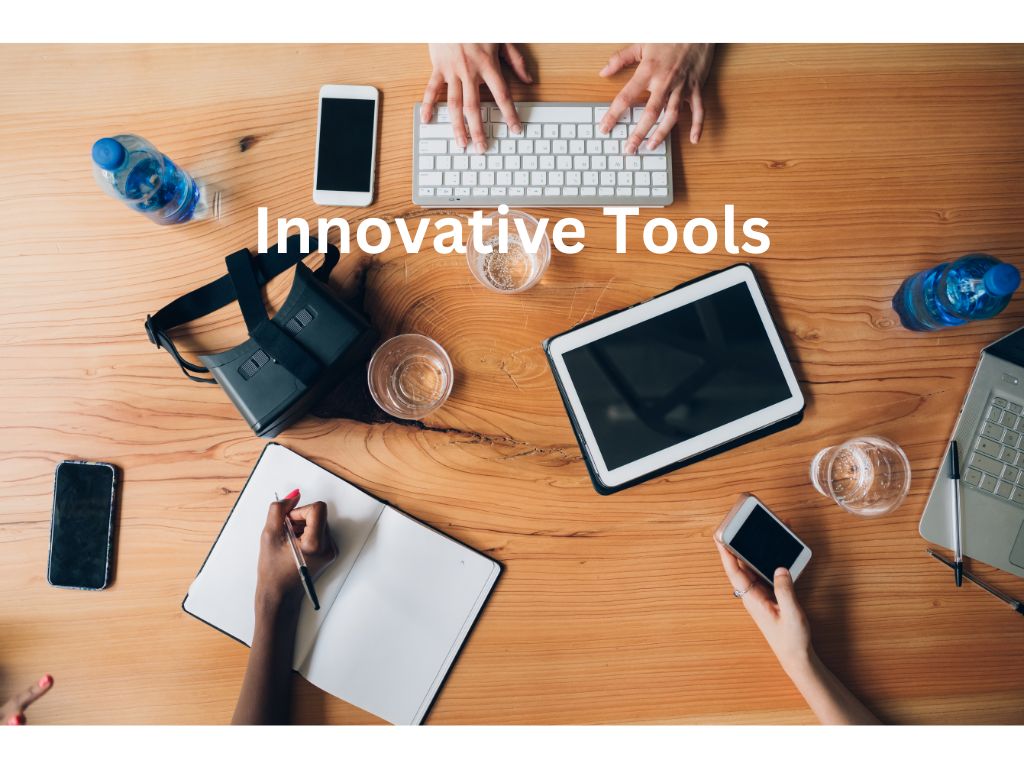The digital world is booming, and it’s essential for everyone to get on board, especially in adult ESL education. Technology isn’t just a flashy addition, it’s a game-changer in breaking down barriers and opening up new opportunities. It allows learners to access a treasure trove of resources that are only a click away, no matter where they are.

With tech in their toolkit, ESL learners can connect with materials tailored to their specific needs and learning pace. This is a huge win because everyone learns differently. For those juggling jobs and family, online resources mean they can study whenever they find time, not just when a classroom seat is available.
Here’s where the magic of tech really shines – it supports diverse learning needs in ways that traditional methods can’t always manage. Interactive lessons, video tutorials, language apps – they all bring English learning to life, making it more engaging and less daunting.
Moreover, integrating technology in ESL programs prepares learners for the modern world. Knowing their way around a computer isn’t a nice-to-have anymore; it’s a must. From job applications to social interactions, so much happens online. By becoming tech-savvy, ESL learners are better equipped to succeed in their personal and professional lives.
Today, computing is a key skill. Without it, the resources available for learning remain locked away. Opening the door to technology means opening the door to endless possibilities, making education more inclusive and effective.
Building Computer Literacy: The Foundation of ESL Success
Understanding basic computer skills isn’t just an added bonus; it’s foundational for adult ESL learners. When you know your way around a computer, the world of online resources opens up wide. This is crucial for those aiming to improve their English while balancing busy lives.

First off, learning essential computer functions is a game-changer. Start with the basics – knowing how to turn on and off a computer, operate a mouse, and navigate through the desktop. These might seem trivial, but they’re the building blocks to becoming comfortable with technology.
Learning to type properly is next on the agenda. Forget about the ‘hunt and peck’ method – it’s slow and frustrating. Using typing software or online tutorials can help build speed and accuracy. Aim for touch typing, where you don’t even look at the keyboard. It’s a skill that not only saves time but also boosts confidence.
Navigating the web is another critical skill. Opening, closing, and managing tabs can make browsing more efficient. Knowing how to use a browser – entering web addresses, using search engines, and bookmarking important pages – sets the stage for accessing a wealth of online learning materials. Plus, it makes online classes and resources so much more manageable.
Don’t underestimate the power of practice. Encourage consistent use of these skills; it makes a huge difference. Computers aren’t just tools for learning English; they’re gateways to new opportunities and confidence. The sooner learners embrace these skills, the faster they’ll reap the benefits.
Innovative Tools and Resources for Enhanced Learning
The digital era offers a wealth of tools designed to make learning English easier and more effective. It’s no longer just about textbooks; it’s about interactive experiences that fit into our digital lives.

Software and apps tailored for ESL learners can significantly boost the learning process. Tools like Duolingo and Rosetta Stone offer lessons that adapt to a learner’s pace, making it feel less like a chore and more like a game. These apps often include speech recognition features, which help in improving pronunciation and fluency.
Online platforms and digital classrooms are revolutionizing ESL education. Websites like Coursera and Khan Academy provide access to comprehensive courses covering everything from basic grammar to advanced language skills. The best part? Many of these resources are free or low-cost, making high-quality education accessible to more people.
Multimedia resources, such as YouTube channels and podcasts, bring language learning to life. Watching videos or listening to native speakers can improve listening skills and pronunciation. Channels specifically targeted at ESL learners offer bite-sized lessons that are easy to follow and highly engaging.
Interactive technologies, such as virtual reality (VR) and augmented reality (AR), are emerging as exciting tools in ESL education. Imagine practicing conversational English in a virtual café or exploring English-speaking countries without leaving your home! These immersive experiences can make learning feel like an adventure rather than a task.
By leveraging these innovative tools and resources, learners can experience a more dynamic and engaging approach to mastering English. Harnessing the power of technology not only makes education more enjoyable but also more effective.
Strategies for Implementing Technology in the Classroom
Blending technology with traditional teaching methods creates a rich, engaging learning environment. Success hinges on strategic planning and a thoughtful approach.

Start with training educators and staff. Teachers need to be comfortable with the tech tools before they can introduce them to their students. Workshops and continuous professional development can ensure educators are confident and capable of using these resources effectively.
Creating a tech-friendly learning environment means more than just having the gadgets. Ensure classrooms have reliable internet connections and that devices are regularly updated and maintained. A conducive space for both teachers and students fosters better learning experiences.
Integrating tech into the curriculum should be seamless, not forced. Mix digital resources with conventional teaching methods to keep things balanced. Interactive whiteboards, educational apps, and online quizzes can complement traditional exercises and discussions.
Engage students by incorporating interactive activities. Gamified lessons and digital storytelling can make learning English fun and relatable. Encourage students to use their smartphones and tablets for educational purposes, turning potential distractions into valuable learning tools.
Measure the impact of these technologies. Use assessments and feedback to understand what works and what doesn’t. Regularly review these insights to refine and improve tech integration, ensuring it meets the learners’ needs. Tracking progress helps tailor future tech deployments for maximum benefit.
Leave comments and questions in the space below.


Hi KBob,
Thank you for this insightful post on enhancing adult ESL education with technology! I have a few questions I’d love to discuss:
1. Personalization: How can technology better cater to individual learning styles among adult ESL students?
2.Implementation Challenges: What common challenges do educators face when integrating tech, and how can they overcome them?
3. Emerging Trends: What new tools or trends do you think will most impact ESL education in the future?
I look forward to your thoughts!
Hi Trever, welcome back again. Thanks for your comments and questions.
Technology is such a broad term that it’s literally got something for everyone. If people can go it alone, there are so many resources available. If they need help, again, there are countless resources, including this website.Everyone learns differently. Personalization is about doing what works best. What works for one doesn’t necessarily work for someone else and vice versa.
I can only speak for myself but the biggest challenge I face integrating tech is that so many people, especially older folks are basically computer illiterate. Once they are up to at least beginner level of understanding how to use a computer, the rest takes care of itself. There are students who are simply afraid to use a computer.
The emerging trend that already is and will continue to impact ESL education and the world at large is artificial intelligence (AI). It’s here to stay.
Leave comments and questions here anytime.
KBob